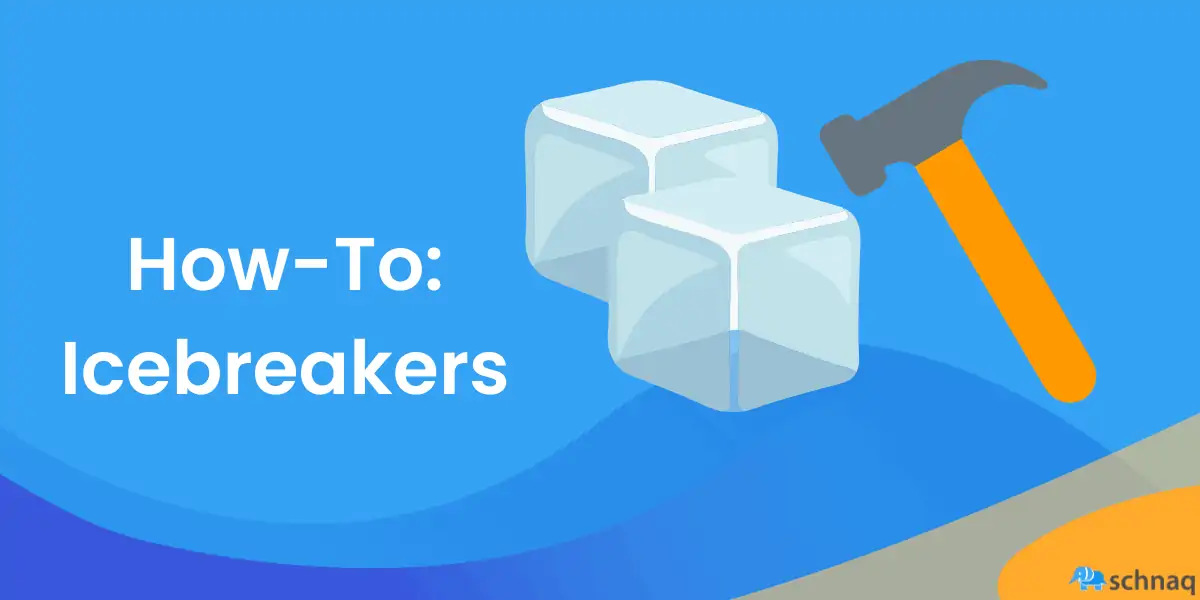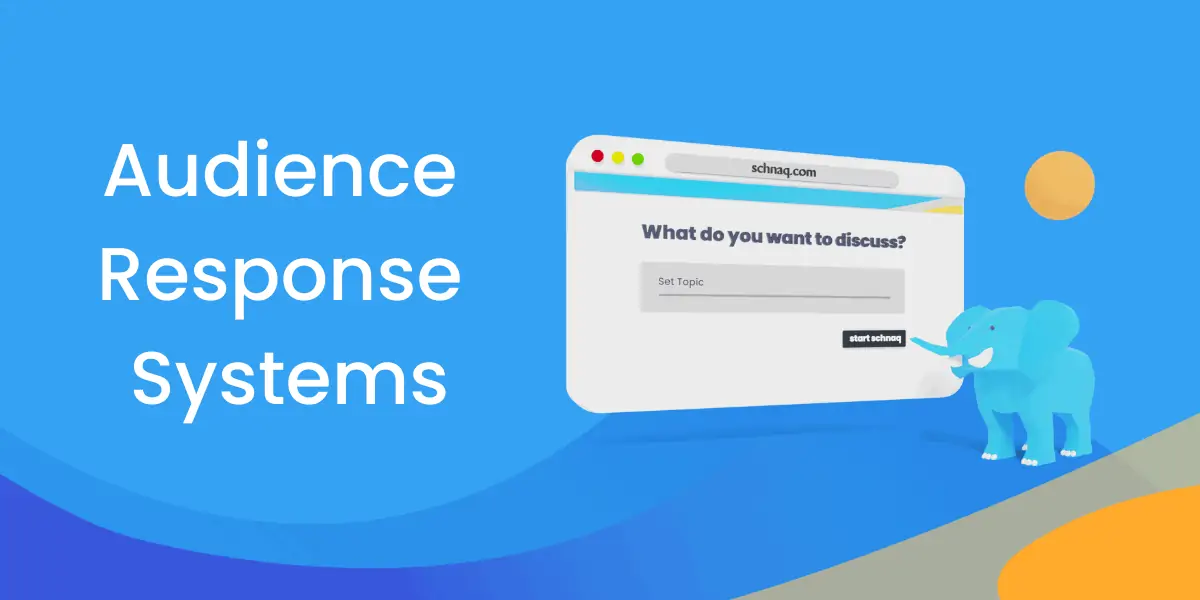Top 10 Methods for Successful Q&A Sessions
By Alexander Schneider
As you always thrive to improve the quality of your virtual or in-person events, ‘Audience Engagement’ will be the one term that pops up in your mind frequently. Because it is considered as one of the metrics used to measure the success of an event. Facilitating Live Q&A is one of the definitive methods to stimulate audience engagement during an event. The Q&A session is that part of the event, where you get connected with your audience by switching yourself from the role of a presenter to a person who takes part in an active discussion. Delivering right answers in your Q&A session will not only engage your audience, but also demonstrate your expertise, and help to elevate your talk and reinforce your credibility as a speaker. Despite all the advantages, even seasoned Speakers find Q&A part of the event nerve wracking. The unpredictable and surprising questions during Q&A evoke anxiety and even fear in them. One wrong move and you may lose the reputation and credibility you’ve worked hard to build as a speaker.
How to Host a Successful Q&A session?
Here are top 10 foolproof methods prepared by our team after consulting with experienced coaches. After reading this article you will be optimally prepared to facilitate a successful Q&A session.
1. Pre-brief the event
The first step you need to follow before starting the presentation is to pre-brief the event structure to your audience. Pre-briefing serves as a map for your presentation. In the briefing, you need to introduce all the people right from the presenter to the stage- managers who play a major role in the event. You can also define the ground rules and time frame for each segment of the presentation and Q&A. It will help the audience understand the flow of your event and also helps to avoid the confusion of the audience, if there will be a Q&A.
2. Ice breakers

All Coaches and Public speakers experienced a few minutes of stiffness and awkwardness at the start of the Q&A session from the audience after the presentation. The best method to tackle this problem is to ask ‘Ice breaker questions’. It helps to launch a conversation with your audience. Plan some funny, weird, and interesting icebreaker questions in advance like How much money would you give me right now if I asked?What would be the title of your autobiography?etc.
Also Read: How to Choose the Best Icebreakers for Your Online or Hybrid Event
3. Prepare potential questions in Advance
As you work on your presentation, prepare for the Q&A session at the same time. When preparing for the Q&A , put your audience first in your mind and think from their perspective and craft questions and answers accordingly. You can also derive ideas for potential questions from topic-related articles on Google. While answering try to keep it short and direct.
4. Stick to the Time
The majority of Q&A sessions are held at the end of a presentation. In most cases, organizers allocate not less than 15 minutes for Q&A.In Order to get the maximum output out of this limited time one needs to organise it effectively. Inform your audience ahead of time that a Q&A session will take place. State clearly that this is the time for questions, and make sure that you stick to that time limit. Still, It is quite obvious that you will not be able to answer all the questions within the dedicated time frame. It is where the Q&A tools play the role, it will help you track the unanswered questions. You can continue the conversation even after the event through the Q & A tool. This way, you can stay respectful of people’s time whilst allowing everyone to have their questions answered.
5. Introduce Audience Engagement tools to facilitate Q&A

When planning a Q&A session, using the right question and answer tool must be an important item on your checklist. Many public speaking connoisseurs suggest that investing in an audience engagement platform is the smartest thing one can consider to host a successful Q&A session. It breaks the barrier of collecting questions only during the specified time, Instead, the audience can ask their questions at any time during the presentation. In addition, audience members can upvote the questions asked by other audiences so that the presenter can easily prioritize the questions. Another important benefit is that both the presenters and the audience have access to this Q&A session even after the event is over. Thus, if you can’t answer a question within the allotted time, you still have the option to answer the questions later. Hence no question remains unanswered, which in turn makes the audience feel that their voice has been heard and that they are being valued.
6. Give them Freedom to Ask through Anonymity
Another important problem that you may have to combat is the fear of the audience taking part in the Q&A session. Why is the audience reluctant to get involved in a Q&A? The main reason is people are afraid of looking stupid. We all might have gone through the situation of being judged since you asked a question stupid from the perspective of another person. Now it all makes sense, no one wants to feel embarrassed especially when you are among the crowd. The easier option is to hide the question inside yourself and remain silent. As an event host, it is your responsibility to ease this situation and encourage them to ask questions. You can use the help of technology here. Q&A tools provide the option of asking questions without revealing one’s identity. So that you can avoid the dilemma in your audience’s mind and encourage them to ask questions right away.
7. Engage a Strong Moderator
If you are hosting a large-scale event, A moderator and the right Q&A tool in place can sort more than half of the stress associated with the session. A moderator is a person who helps to execute the complete Q&A session in an organised and effective way. One of the key traits of a moderator is that they clear the way for a successful Q&A session, and will never dominate it. Moderators play multiple roles to ensure that the objectives of the session are intact, by managing the session flow, guiding the conversations towards the session objective(s), and holding participants to time limits. Make sure they will be able to handle the mentioned points when you are choosing a moderator for your next event.
8. Don’t Hesitate to say “I don’t Know”
Even after preparing all the possible questions, there are still possibilities to get caught up with questions during the Q&A that you have no answer to. As a speaker this could be a point where you lose your confidence and sometimes you may have used the technique ‘If you cannot convince them , confuse them’ to tackle the situation. Why do we feel inferior when you are saying ‘I don’t know’. The answer is: society has equated knowing everything to intelligence. Is that right? No.You will never be in a position to know all the answers , but to provide answers. The right answer to a question you don’t know is, “I don’t know, but I’ll find out and get back to you.
 Source: BDEngler
Source: BDEngler
“There is no shame in admitting what you don’t know .The only shame is pretending you know all the answers”
— Neil Degrasse Tyson (American astrophysicist)
9. Avoid Using Filler Words
Filler words – like, um, ah, ahem, you know – are the verbal crutches we use when we’re gathering our thoughts or bridging a silence. Using these words repeatedly during your presentation or the Q&A session can cause listeners to think (whether consciously or unconsciously) that you don’t know what you’re saying. Which in turn diminishes your credibility. How do we eliminate these crutch words? The best rule of thumb to avoid filler words is always to allow for a nice, solid pause after being asked a hard question. Well and Strategically placed silence pauses make you sound calm and collected, it can even build suspense among the audience.
10.Watch Your Body Language
When listening to a question during the Q&A session make sure to avoid defensive body language like crossing your arms, not keeping eye contact, standing with hands-on-hips, holding your hands behind your back, etc. Because body language speaks before you even say anything! It is vital to have body language that communicates your openness and receptive nature, which will encourage your audience to actively participate in the Q&A.